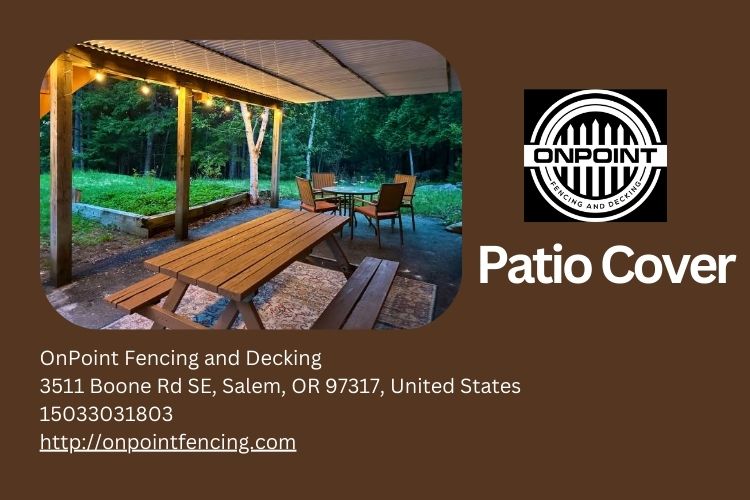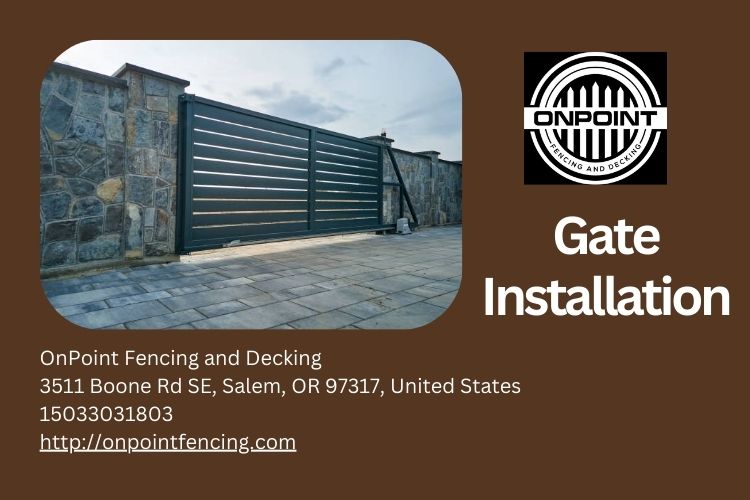Introduction
When it comes to enhancing your outdoor living space, few home improvements can match the transformative power of a well-designed deck or patio cover. Not only do these structures provide a functional area for relaxation and entertaining, but they also significantly boost your home's aesthetic appeal. In this article, we will delve into the nuances of combining style and functionality in designing the ideal deck and patio cover. With insights from experts like fence contractors, decking contractors, and designers, you'll gain a comprehensive understanding of how to create an outdoor space that reflects your personal style while serving practical purposes.
Combining Style and Functionality: Designing the Ideal Deck and Patio Cover
Designing an ideal deck and patio cover requires a delicate balance between aesthetics and practicality. Whether you're looking to host summer barbecues or enjoy quiet evenings under the stars, your design choices will play a pivotal role in determining how well these spaces serve their purpose.
When considering materials, colors, and layouts, it's essential to think about how each element interacts with both your home’s architecture and the surrounding environment. For instance, if you live in a sunny climate, choosing materials that withstand UV rays while maintaining visual appeal is crucial. Similarly, if you're often dealing with rain or snow, incorporating features that provide adequate shelter is vital for year-round enjoyment.
Additionally, enlisting the expertise of a decking contractor can be invaluable in ensuring structural integrity while maximizing design potential. They can recommend specific materials tailored to local weather conditions as well as offer innovative solutions for maximizing space without sacrificing style.
Understanding Your Outdoor Space
Assessing Available Area
patio covers installationBefore diving into design concepts, it's important to assess your available outdoor area thoroughly. Take measurements of your yard or garden where you envision placing your deck or patio cover.
- What are the dimensions? Are there any existing structures or landscaping features that might impact placement? How much sunlight does different areas receive throughout the day?
These questions will guide you in making informed decisions about size and orientation—factors that greatly influence function.
Considering Local Regulations
Every municipality has its own set of building codes and zoning laws regarding outdoor structures. Engaging with local authorities early in your planning process ensures you understand any restrictions or requirements pertaining to permits for decks or patio covers.
What regulations should I be aware of?
You may need permits for:
- Height restrictions Setback requirements from property lines Materials used
Consulting with professionals experienced in navigating these regulations can save you time and headaches down the line.
Choosing Materials Wisely
Wood vs Synthetic Options
One of the most significant decisions when designing your deck is choosing between natural wood or synthetic alternatives. Both options have their merits:
- Natural Wood: Provides an organic look; however, it may require regular maintenance including staining and sealing. Composite Materials: Often made from recycled materials; they resist fading and warping but can lack some warmth associated with real wood.
A knowledgeable decking contractor can help evaluate these options based on durability requirements specific to your location.
Incorporating Metals
Many modern designs incorporate metal elements such as aluminum railings or galvanized steel supports for added durability. These materials provide an industrial flair while ensuring long-lasting performance.
Designing Layouts That Flow
Creating Seamless Transitions
The layout of your deck should facilitate easy movement between indoor living spaces and outdoor areas. Consider installing wide doors leading out onto the deck or patio to create a natural flow from one space to another.
How can I make transitions seamless?
Utilize similar flooring materials for both interior spaces and outdoor decks to enhance continuity visually:
| Material | Interior Use | Outdoor Use | |------------------|--------------|-------------| | Hardwood | Yes | No | | Composite | No | Yes | | Tile | Yes | Limited |
Adding Functional Features
Incorporating Built-In Seating
Built-in seating not only maximizes space but also adds a stylish touch without requiring additional furniture. Consider creating benches along perimeter edges that double as storage units for cushions during inclement weather.
Patio Covers: An Essential Element
Types of Patio Covers
Patio covers come in various forms depending on desired functionality:

Each option affects ambiance differently—be sure to weigh pros/cons based on how you intend to use this space!
Incorporating Landscaping Elements
Surrounding Nature’s Beauty
Landscaping plays an essential role in harmonizing decks/patios with nature around them. Consider planting native flora that complements hardscapes visually while requiring minimal maintenance—a win-win!
What plants work best near patios?
Opt for low-maintenance varieties like:
- Ornamental grasses Drought-resistant succulents Perennials
FAQs
1. What is the average cost of building a deck?
The average cost varies widely depending on size, materials used (wood vs composite), labor costs in your area; expect anywhere from $15-$50 per square foot.
2. How long does it take to build a deck?
Typically 1-2 weeks depending on complexity/size; consult with contractors for accurate timelines based on project specifics.
3. Can I install my own patio cover?
Yes! However DIY projects require careful planning & knowledge about construction techniques; hiring professional assistance may ensure better results!
4. How do I maintain my wooden deck?
Regular cleaning followed by periodic staining/sealing every 1-2 years prolongs wood life; consider using protective coatings specifically designed for outdoor furniture/decks too!
5. Are there eco-friendly options available for decking materials?
Absolutely! Look out for sustainable timber certified by organizations such as FSC (Forest Stewardship Council) or explore composite boards made from recycled plastics & wood fibers!

6. How do I choose between different types of patio covers?
Consider factors like climate conditions (amount sunshine/rainfall), desired level ventilation/light exposure when deciding which type suits best!
Conclusion
By thoughtfully combining style with functionality through strategic design choices—such as selecting appropriate materials & collaborating closely with skilled professionals like fencing contractors & decking contractors—you’ll create an inviting oasis right outside your door! Embrace creativity while considering practical aspects ensures both aesthetic appeal & long-lasting enjoyment—making every gathering special under those beautifully crafted patios/decks!
Incorporating elements discussed above will guide you toward achieving that perfect blend everyone desires—so get started today! Remember: A well-designed deck/patio isn’t just an investment in property value but also enhances quality-of-life experiences enjoyed outdoors!
Contact Us
OnPoint Fencing and Decking
3511 Boone Rd SE, Salem, OR 97317, United States
Phone: 15033031803